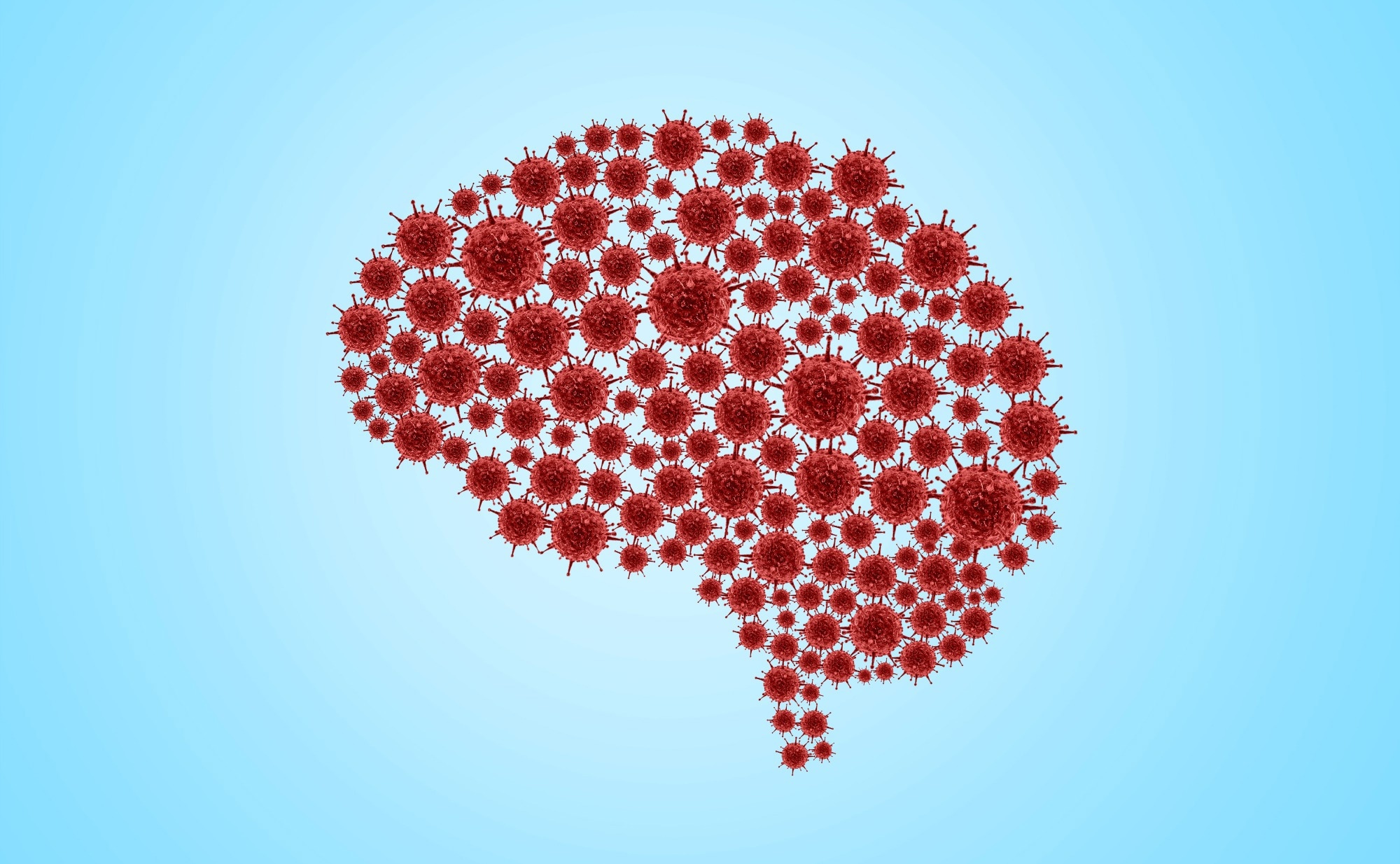In a recent study published in the Brain journal, researchers in the United States analyzed the neurovascular injury in coronavirus disease 2019 (COVID-19).
 Study: Neurovascular injury with complement activation and inflammation in COVID-19. Image Credit: DOERS / Shutterstock
Study: Neurovascular injury with complement activation and inflammation in COVID-19. Image Credit: DOERS / Shutterstock
Background
Numerous neurological problems can arise in severe acute respiratory syndrome coronavirus 2 (SARS-CoV-2) patients. Indeed, 1 to 5% of hospitalized COVID-19 patients suffer strokes, some without preexisting risk factors. However, it is still unclear how SARS-CoV-2 causes both short-term and long-lasting neurological manifestations. Besides, it is yet unknown if SARS-CoV-2 infects brain cells or whether these abnormalities are secondary to immune-triggered events.
About the study
The current study aimed to define the neuropathological abnormalities in COVID-19 patients and identify the pathophysiological processes causing these changes. The investigators performed comprehensive immunohistopathological and virological investigations on autopsy brain tissue from dead COVID-19 patients.
The scientists assessed nine COVID-19 patients who died during the initial COVID-19 wave between March and July 2020. SARS-CoV-2 infection was confirmed on a post-mortem or antemortem screening. In addition, they conducted a descriptive assessment of the pathological variations and quantitative evaluations of the infiltrate and vascular modifications.
In the present brain autopsy study, the team used immunohistochemistry to describe the vascular pathology, neuroinflammatory alterations, and humoral and cellular immune reactions. Autopsied brain tissues, including the temporal and frontal lobes, olfactory bulb, basal ganglia, thalamus, hippocampus, midbrain, cerebellum, pons, and medulla oblongata, were subjected to immunohistochemical examination.
The researchers explored if a vascular impairment might be associated with endothelial cell dysfunction. Additionally, they searched for the accumulation of immunoglobulins to assess whether the endothelial cell compromising would be an immune-triggered process.
Results, discussions, and conclusions
Collectively, multiple large proteins, like immunoglobulin M (IgM), that ordinarily do not pass the blood-brain barrier were present in the perivascular areas of the deceased COVID-19 patients, which showed the deterioration of vascular integrity in those patients. High fibrinogen levels were seen in the vicinity of the blood vessels, with concentrations gradually declining as the distance from the vasculature increased, indicating a porous blood-brain barrier. Moreover, the vascular injury indicators were more frequent across the hindbrain.
The endothelial cells harbored high platelet endothelial cell adhesion molecule 1 (PECAM-1) titers; however, the cause of heightened PECAM-1 is unknown. Notably, the study found that the PECAM-1 serves as an adherent for platelets and their aggregates attached to the endothelial cells.
The stimulated platelets occasionally led to the obstruction of the tiny blood vessels, confirmed by the spatial transcriptomics data. The tissue factor (TF) and CD74 genes help to distinguish between COVID-19 patients from controls and aid in the thrombi development.
Relative to controls, the COVID-19 patients had higher levels of the signaling pathways for semaphore and the ras homologous guanosine diphosphate-dissociation inhibitor (RhoGDI), which correlates with vascular permeability. These inferences accounted for microinfarcts observed in magnetic resonance imaging (MRI) of some SARS-CoV-2 patients.
Interestingly, the team discovered 25 angiogenesis-associated genes contrastively expressed in the COVID-19 patients' brains, which corresponded with the earlier work on lungs. They also identified dysregulation of the signaling pathways implicated in angiogenesis. The histopathological findings were comparable to these dysregulations of vascular genes.
Endothelial cells and platelet aggregates possessed IgM and IgG masses co-localized with many complement cascade components. The existence of C4d, C1q, and C5b-9 were indications of an activated classical complement network. The team also discovered C1q and C3 deposition in macrophages and endothelial cells, brought on by the SARS-CoV-2 spike (S) protein.
Immunohistochemistry revealed cellular infiltrates of macrophages, CD8+, and CD4+ T cells in COVID-19 patients, in line with previous reports. Similarly, the spatial transcriptomics data showed that areas with high concentrations of PECAM-1+ or CD45+ cells, such as RhoGDI, boosted the signaling pathways engaged in the migration or trafficking of these cells.
Despite the low amount of T cells, CD8+ cells exceeded CD4+ cells, and B cells were relatively rare, showing that the inflammatory infiltrates were secondary to the release of serum proteins to the perivascular zone since macrophages serve as scavengers and assist in the repair procedure.
Neurons and glia absorbed serum proteins like complement and fibrinogen. Likewise, astrocytosis was most common in the perivascular domains, indicating that this condition was associated with vascular damage. The cerebellum and other hindbrain areas experienced a multifocal depletion of neurons.
Sirtuin and other genes and signaling routes connected to oxidative stress and deoxyribonucleic acid (DNA) impairment were increased in COVID-19. Interestingly, most pathological observations were more frequent in the hindbrain, congruent with prior reports, although the reason is still uncertain.
Importantly, five participants in the study passed away suddenly, the majority when they were asleep, so even though dysautonomia or cardiac arrhythmia might have played a role, central apnea needs to be taken into account. According to the spatial transcriptomics data, most pathways differently regulated were connected to the immune reaction.
The authors suggested that antibody-triggered cytotoxicity targeting the endothelial cells probably led to neuroinflammation, vascular leakage, platelet aggregation, and neuronal damage.
Overall, the study findings illustrated that immune complexes accompanying complement activation damaging the microvasculature were the primary cause of blood-brain barrier collapse, microthromboses, perivascular inflammation, and neuronal damage in SARS-CoV-2 patients. The authors proposed that these events largely influenced the neurological symptoms found in acute COVID-19 and probably in long-COVID. Importantly, the current findings indicated the need for therapeutic modalities targeting the development of the immune complex.
Journal reference:
- Myoung Hwa Lee, Daniel P Perl, Joseph Steiner, Nicholas Pasternack, Wenxue Li, Dragan Maric, Farinaz Safavi, Iren Horkayne-Szakaly, Robert Jones, Michelle N Stram, Joel T Moncur, Marco Hefti, Rebecca D Folkerth, Avindra Nath, Neurovascular injury with complement activation and inflammation in COVID-19, Brain, 2022;, awac151, DOI: https://doi.org/10.1093/brain/awac151, https://academic.oup.com/brain/advance-article/doi/10.1093/brain/awac151/6621999?searchresult=1&login=false